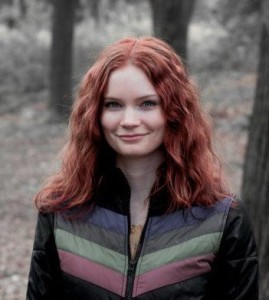The End of October, by Lawrence Wright: So I’ve only read one of Lawrence Wright’s numerous nonfiction books (Going Clear, the most comprehensive look at Scientology of our time), but that was enough to know he’s a great nonfiction author. This…is fiction. It’s simultaneously very prescient in that it’s a plague novel that came out in April of 2020 – originally I thought, oh, maybe this was a fun thing he did at the beginning of the pandemic – and not all that prescient in that people write plague novels all the time, so one was bound to hit at the right moment. I’m definitely the audience for pandemic fiction, but this was so silly. Ridiculous plot elements, heavy-handed dialogue, backstories that were both overwrought and yet unmemorable at the same time…I finished it because it reads fast and I’m something of a completionist (not a compliment to myself), but I very much look forward to reading the next Lawrence Wright work of nonfiction and forgetting about this foray.
Phase Six, by Jim Shepherd: …I needed another pandemic novel as a palate cleanser. Not that I ever needed an excuse for a dystopian, disease-ridden, or otherwise post-apocalyptic journey. This is set in Greenland, which immediately made it interesting. I know that sounds reductive, but Greenland! A place almost as difficult to travel to as Antarctica, but where people actually live. But…it fizzled after that. There was a B-plot with a character that seemed totally superfluous to the story, and the A-plot itself was unsatisfying. I found myself forgetting the characters and their backstories and not particularly invested in any of them. Even along plot lines there was nothing to really hold onto. I do appreciate that it’s hard to publish a pandemic novel right on the heels of COVID (the press material for Phase Six notes that it was completed before COVID, so it must have been edited fairly late to include references about how humans had learned nothing from that pandemic). But…regardless of circumstances, I found it lacking.
City of Ash and Red, by Hye-Young Pyun: It was a rainy day and I thought to myself, do I really want to go for a trifecta of pandemic novels? Yes! I do. I want to work my way to a good one. Unfortunately…the trifecta I hit was one of disappointing pandemic novels. This was so anonymous and abstracted, down to the main character being “the man” and the locale being “Country C,” that it slipped away from my train of thought if I let my concentration waver for a fraction of a second – but it wasn’t especially rewarding when I was able to focus on the page. In the second part of the book, the focus shifted from abstract illness to more tangible mystery (and also: rats!) and grew more interesting. It ultimately was too vague and generalized to truly grab me.
After a run of disappointing pandemic books, I am pleased to report that I found a Netflix show perfectly tailored to my interests: pandemic, but in Russian (so I can practice). Though I am biased by my predilections I find the show, To the Lake, well acted and written so far (I’m three episodes down), although I started to worry that it was going in some directions I’ve already seen in early seasons of The Walking Dead (though no zombies so far).
The Terror Years: From al-Qaeda to the Islamic State, by Lawrence Wright: Back to Wright’s nonfiction. I discovered early on that I probably should have read The Looming Tower before reading this, but…I watched the TV show adapted from it and it felt like it would be something of a retread. According to some disappointed reviews, The Terror Years repeats material from The Looming Tower, but I’ll probably still read that one at some point as well. These are essays, which I find more compelling when they’re gathered together in book form. I had a New Yorker subscription for a while and found it overwhelming. Of course, Kindle books don’t just magically show up each week on my device, and it was the arrival and subsequent piling that drove the feeling of not-reading-fast-enough. But it seems a weak excuse that I need a formatting change in order to propel me through what is ultimately the same text.
Hoarders, by Kate Durbin: At first I…had a hard time with this. Not the content, but the form. I thought it might have worked well if it were much shorter (even shorter than its 185-ish pages), but it was all just a list. Yes, in aggregate it gave a sense of overflow and overwhelm, but that sense was apparent after chapter one and didn’t seem like it was going to evolve from there. That said, I found myself more and more affected as the chapters piled up, which I imagine was one of the intended effects, and some of the sections on their own are highly affecting.



